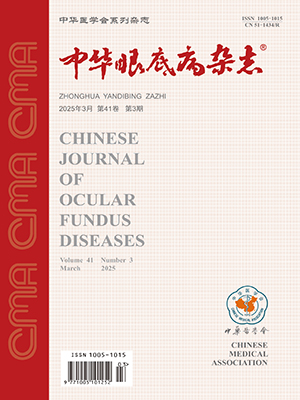Objective To assess the effects of 670nm LED (lightemitting diode) to protect the photoreceptor from the lightinduced damage in a rat model. Methods 32 SD rats were randomly assigned to one of eight groups: untreated control group, the LEDtreated control group, three groups of lightinduced damage,and three groups of lightinduced damage treated with LED. Lightinduced damage result from exposing to constant light for 3 hours of different illuminations of 900,1800 and 2700 lx, respectively. The LED treatment (50 mW) was delivered for 30 minutes at 3 hours before the light damage and 0,24 and 48 hours after the light damage. Retinal function and morphology were measured by electroretinogram (ERG) and histopathology assay. Results The illumination of 900 lx for 3 hours did not damage the rat retina. The illumination of 1800 lx for 3 hours resulted in thinner ONL and no OS and IS. The ratio of damaged area/total retinal area was 048 plusmn;012, the damaged thickness of ONL/normal ONL (L5 ) was 039 plusmn;007,and the amplitude of ERG b wave was (431 plusmn;120) mu;V. With the LED treatment the ratio of damaged area decreased (M6=017 plusmn;0.12, P5/6=0.002), and the ratio of the damaged thickness of ONL also decreased (L6=0.22 plusmn;0.09, P5/6 lt;0.01), and the amplitude of ERG b wave increased to (1011 plusmn;83) mu;V(P5/6 lt;0.001). The illumination of 2700 lx for 3 hours caused severed damage to the rat retina and the LED could not protect them significantly. Conclusions 670 nm LED treatment has an evident protective effect on retinal cells against light-induced damage, which may be a simple and effective therapy to prevent or to delay agerelated macular degeneration.
Citation: lucy Jefferson Lifeng Qiao Wei Cao Yingchuan Fan. Light-emitting diode treatment protects the photoreceptor from light-induced damage in rat. Chinese Journal of Ocular Fundus Diseases, 2009, 25(2): 128-132. doi: Copy
Copyright © the editorial department of Chinese Journal of Ocular Fundus Diseases of West China Medical Publisher. All rights reserved




